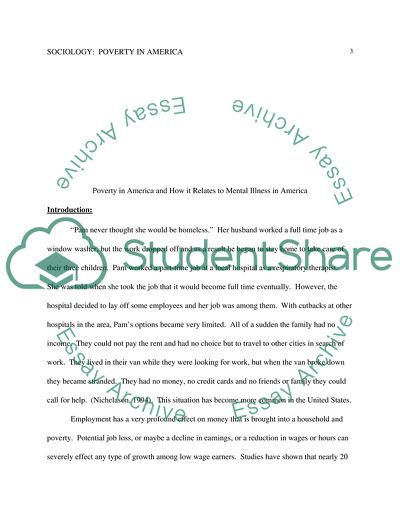Cite this document
(Poverty in America and How it Relates to Mental Illness in America Literature review Example | Topics and Well Written Essays - 1750 words, n.d.)
Poverty in America and How it Relates to Mental Illness in America Literature review Example | Topics and Well Written Essays - 1750 words. https://studentshare.org/sociology/1768435-poverty-in-americamental-illness-in-america
Poverty in America and How it Relates to Mental Illness in America Literature review Example | Topics and Well Written Essays - 1750 words. https://studentshare.org/sociology/1768435-poverty-in-americamental-illness-in-america
(Poverty in America and How It Relates to Mental Illness in America Literature Review Example | Topics and Well Written Essays - 1750 Words)
Poverty in America and How It Relates to Mental Illness in America Literature Review Example | Topics and Well Written Essays - 1750 Words. https://studentshare.org/sociology/1768435-poverty-in-americamental-illness-in-america.
Poverty in America and How It Relates to Mental Illness in America Literature Review Example | Topics and Well Written Essays - 1750 Words. https://studentshare.org/sociology/1768435-poverty-in-americamental-illness-in-america.
“Poverty in America and How It Relates to Mental Illness in America Literature Review Example | Topics and Well Written Essays - 1750 Words”. https://studentshare.org/sociology/1768435-poverty-in-americamental-illness-in-america.


